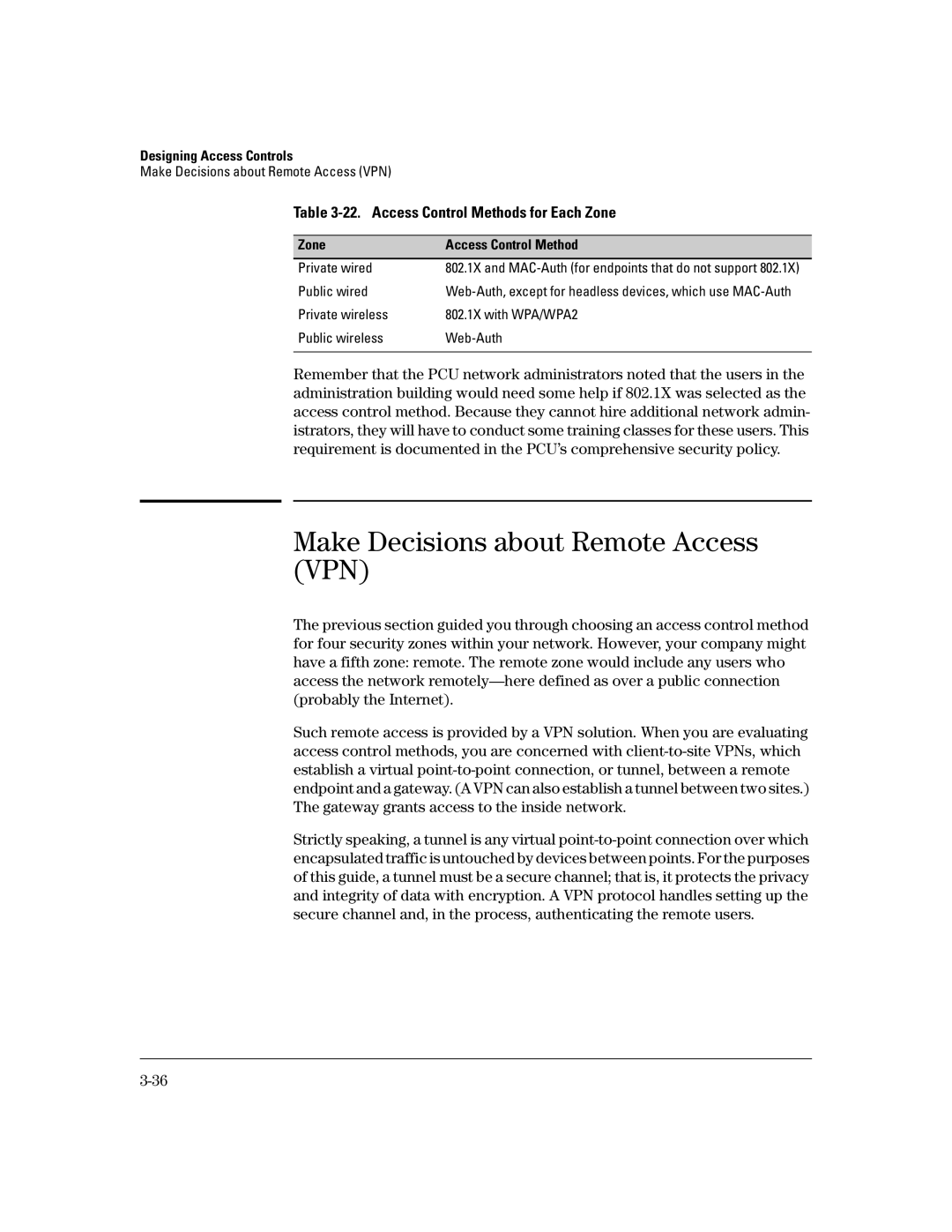
Designing Access Controls
Make Decisions about Remote Access (VPN)
Table 3-22. Access Control Methods for Each Zone
Zone | Access Control Method |
Private wired | 802.1X and |
Public wired | |
Private wireless | 802.1X with WPA/WPA2 |
Public wireless | |
|
|
Remember that the PCU network administrators noted that the users in the administration building would need some help if 802.1X was selected as the access control method. Because they cannot hire additional network admin- istrators, they will have to conduct some training classes for these users. This requirement is documented in the PCU’s comprehensive security policy.
Make Decisions about Remote Access (VPN)
The previous section guided you through choosing an access control method for four security zones within your network. However, your company might have a fifth zone: remote. The remote zone would include any users who access the network
Such remote access is provided by a VPN solution. When you are evaluating access control methods, you are concerned with
Strictly speaking, a tunnel is any virtual
